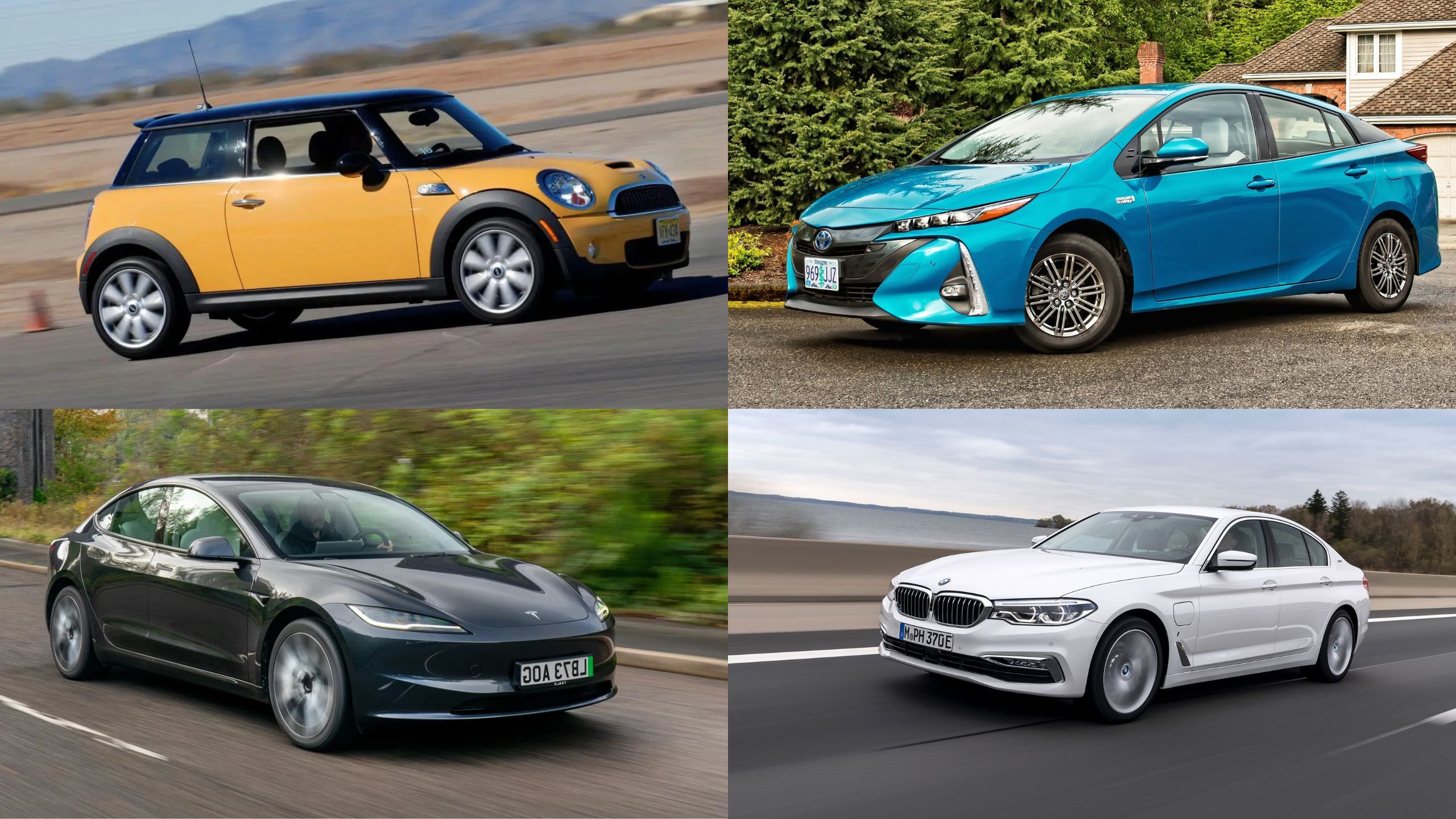Urban commuting presents unique challenges for vehicles, with stop-and-go traffic being particularly demanding on engines and cooling systems.
When trapped in bumper-to-bumper congestion, some cars maintain their composure while others struggle with rising temperatures and performance issues.
The constant cycle of acceleration and braking creates thermal stress that can push cooling systems to their limits, especially in warm weather.
This guide explores five vehicles engineered to handle these challenging conditions with ease, featuring robust cooling systems and technologies designed for urban congestion.
We’ll also examine five models with documented histories of overheating in heavy traffic situations, helping you avoid potential headaches during your daily commute.
5 Cars That Excel in Stop-and-Go Traffic
Whether you’re shopping for a new commuter vehicle or simply curious about how different cars perform under stress, understanding which models excel or struggle in stop-and-go conditions can save you from unexpected roadside breakdowns and costly repairs.
1. Toyota Prius
The Toyota Prius has established itself as the quintessential city commuter, particularly excelling in stop-and-go traffic conditions where its hybrid powertrain truly shines.
Unlike conventional vehicles that waste fuel while idling, the Prius automatically shuts off its gasoline engine when stationary, relying on its electric motor to initiate movement before seamlessly reengaging the combustion engine at higher speeds.
This start-stop cycling which happens thousands of times in typical urban driving has been perfected over multiple generations of the model. The Prius’s cooling system was specifically designed with urban congestion in mind.
It features a separate electric water pump that continues circulating coolant even when the gasoline engine is off, preventing localized hot spots in the engine block.
Additionally, the power electronics cooling system works independently, ensuring that the inverter and battery pack maintain optimal temperatures regardless of traffic conditions.

Toyota’s thermal management system employs multiple radiators and precisely calibrated fans that operate based on numerous temperature sensors throughout the vehicle.
The latest Prius models incorporate active grille shutters that automatically adjust airflow based on cooling needs, improving both thermal efficiency and aerodynamics.
Perhaps most impressively, the regenerative braking system not only recharges the battery during the frequent slowdowns common in traffic but also reduces the thermal load on the conventional braking system. This means less heat generation and lower risk of brake fade during extended stop-and-go driving.
Prius owners consistently report excellent reliability in hot weather and congested urban environments, with the vehicle’s comprehensive thermal management capabilities ensuring that overheating issues are exceptionally rare even in the most challenging conditions. With EPA city ratings typically exceeding 50 MPG, the Prius remains the benchmark for efficient, reliable transportation in urban environments.
2. Tesla Model 3
The Tesla Model 3 represents a paradigm shift in how vehicles handle the challenges of stop-and-go traffic. As a pure electric vehicle, it eliminates many of the traditional overheating concerns associated with internal combustion engines
There’s no engine idling, no transmission fluid to overheat, and no conventional radiator system that can become overwhelmed by constant stops and starts.
Tesla’s sophisticated thermal management system employs a complex liquid cooling circuit that maintains optimal temperatures across the entire battery pack and power electronics.
Unlike some early electric vehicles that used air cooling, the Model 3’s thermal design ensures consistent performance regardless of ambient conditions or driving patterns.
The system actively balances temperatures across thousands of individual battery cells, preventing hotspots that could degrade performance or battery longevity.
In stop-and-go traffic, the Model 3’s regenerative braking system shines particularly bright. While conventional vehicles waste energy as heat during frequent braking, the Tesla recaptures this energy to recharge its battery.
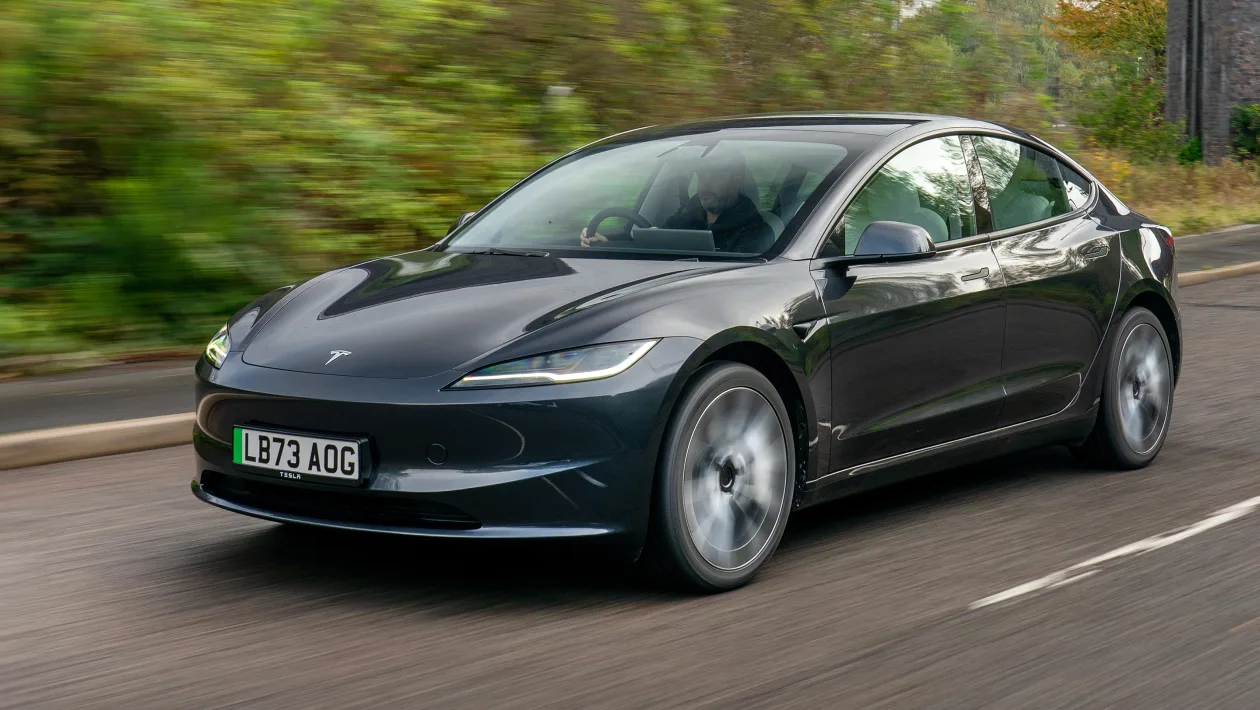
This not only improves efficiency but also significantly reduces stress on the friction braking system, which means less heat generation during the constant deceleration cycles typical of congested driving.
The Model 3’s thermal management capabilities extend to its climate control system as well. The cabin cooling can operate without engine assistance, keeping occupants comfortable even during extended idle periods.
More impressively, Tesla’s software updates have continually optimized the vehicle’s cooling algorithms based on real-world data from hundreds of thousands of vehicles operating in diverse environments.
Tesla’s approach to cooling includes proactive thermal management that anticipates needs rather than merely reacting to temperature increases. The system can pre-cool components before demanding driving conditions and will automatically adjust power output if thermal limitations are approached a rare occurrence even in the most challenging traffic conditions.
With no engine heat to manage and a cooling system designed for worst-case scenarios, the Model 3 remains unfazed by traffic jams that would stress conventional vehicles.
3. Honda CR-V Hybrid
The Honda CR-V Hybrid exemplifies Japanese engineering excellence in thermal management, particularly in challenging urban driving conditions.
Honda’s two-motor hybrid system evolved from years of Insight and Accord hybrid development was specifically calibrated to handle the stress of stop-and-go traffic while maintaining optimal operating temperatures across all powertrain components.
Unlike conventional vehicles that maintain idle engine speed in traffic, the CR-V Hybrid can frequently operate in pure electric mode during low-speed crawls and complete stops.
This dramatically reduces heat generation at the source, sparing the cooling system from constant stress. When the gasoline engine does operate in traffic, Honda’s intelligent cooling system precisely controls coolant flow rates and fan speeds based on thermal load rather than simply engine RPM.
The CR-V Hybrid incorporates multiple radiators in a carefully orchestrated cooling circuit that prioritizes the most thermally sensitive components.
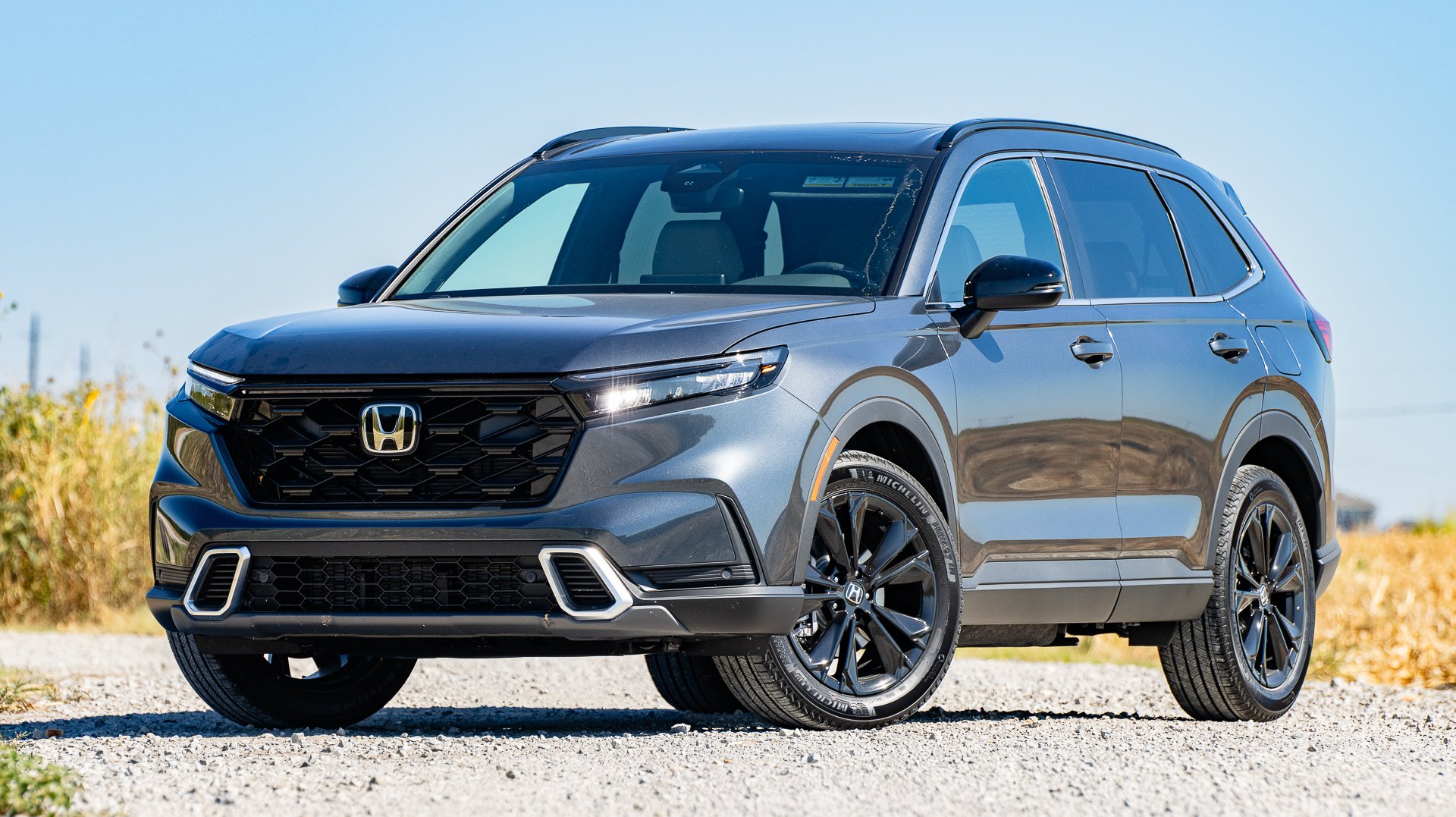
The power electronics cooling loop operates independently from the engine cooling system, ensuring that neither compromises the other during demanding conditions. This dual-circuit approach prevents the cascading thermal issues that plague less sophisticated vehicles in traffic.
Honda’s engineers paid particular attention to transmission cooling in the CR-V Hybrid. The electronic continuously variable transmission (eCVT) features dedicated cooling pathways that maintain optimal fluid temperatures even during the constant engagement/disengagement cycles typical of congested driving.
This prevents the transmission fluid degradation that often leads to failures in conventional vehicles regularly subjected to traffic jams. The thermal management system extends to the braking system as well.
The CR-V Hybrid’s regenerative braking not only improves efficiency but significantly reduces the thermal load on the friction brakes. Meanwhile, the battery cooling system maintains ideal temperatures for the lithium-ion pack regardless of ambient conditions or driving patterns.
Honda’s holistic approach to vehicle thermal management, refined across millions of test miles in diverse conditions, ensures the CR-V Hybrid remains composed and reliable even in the most challenging urban traffic scenarios.
4. BMW 530e Plug-In Hybrid
The BMW 530e represents German engineering excellence in thermal management, incorporating multiple sophisticated systems that work in concert to prevent overheating during challenging traffic conditions.
Unlike conventional luxury sedans that prioritize performance over thermal efficiency, the 530e was designed from the ground up to handle extended periods of low-speed operation without thermal compromise. As a plug-in hybrid, the 530e can operate in fully electric mode during traffic crawls, eliminating the primary source of heat generation.
When the 2.0-liter turbocharged engine does engage, it’s supported by BMW’s advanced cooling architecture featuring multiple radiators, precisely controlled electric water pumps, and active grille shutters that optimize airflow based on real-time cooling demands rather than preset parameters.
BMW’s thermal engineering extends well beyond the engine bay. The 530e incorporates a sophisticated transmission cooler that maintains optimal fluid temperatures even during the constant torque converter cycling of stop-and-go driving.
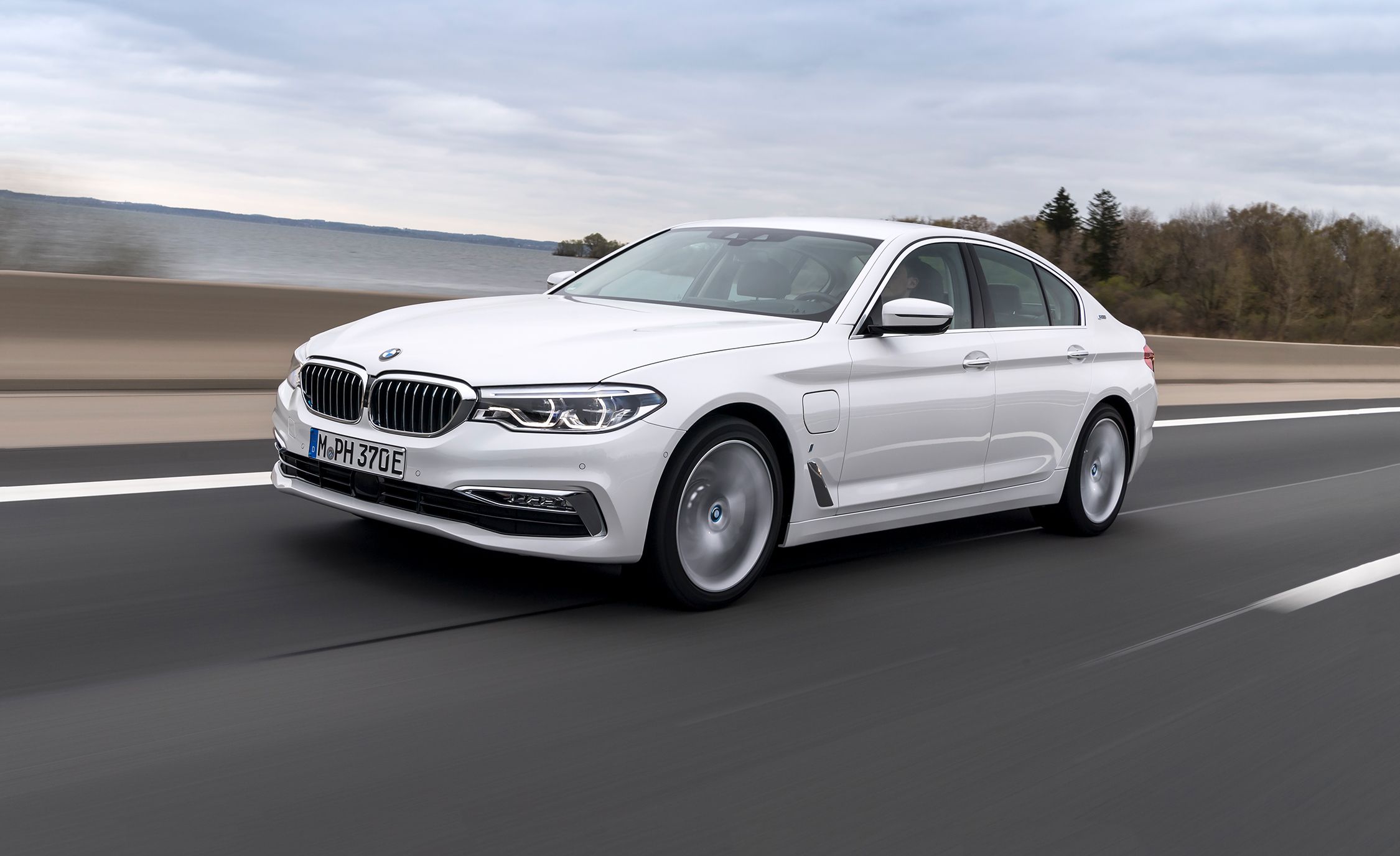
The power electronics feature their own dedicated cooling circuit, ensuring the electric drive components operate within ideal temperature parameters regardless of how the combustion engine is performing.
The 530e’s battery thermal management system is particularly noteworthy. Unlike simpler hybrid vehicles that may struggle to maintain battery performance in extended traffic, BMW employs active liquid cooling for the lithium-ion battery pack.
This system can both cool and heat the battery as needed, ensuring optimal performance and longevity across all driving conditions and ambient temperatures.
Perhaps most impressively, the 530e integrates all these cooling systems into a unified thermal management architecture controlled by sophisticated algorithms.
The vehicle continuously monitors dozens of temperature sensors and predictively manages thermal loads before issues can develop. This proactive approach to cooling, combined with the ability to seamlessly transition between combustion and electric power makes the 530e exceptionally well-suited to the challenges of urban congestion.
Drivers report that even in notorious traffic hotspots like downtown Los Angeles or Manhattan, the BMW’s temperature gauges remain steadfastly in the normal range where lesser vehicles might struggle.
Also Read: 5 Cars That Still Drive Well Over 250K Miles and 5 That Fall Apart Early
5. Lexus ES 300h
The Lexus ES 300h demonstrates Toyota’s luxury division’s meticulous approach to thermal engineering, resulting in a vehicle exceptionally well-equipped to handle the challenges of stop-and-go traffic.
Building on Toyota’s decades of hybrid experience, the ES 300h incorporates numerous refinements specifically addressing the thermal challenges of urban driving.
At the heart of the ES 300h’s traffic resilience is its fourth-generation hybrid system, which features a dedicated cooling circuit for the power electronics and battery.
Unlike earlier hybrid designs, this system maintains optimal operating temperatures for the electric components completely independently from the engine’s thermal management. This separation ensures that neither system compromises the other during the demanding thermal cycles of traffic congestion.
Lexus engineers paid extraordinary attention to the ES 300h’s engine cooling system, equipping it with precision-controlled electric water pumps that modulate flow rates based on actual cooling needs rather than engine speed. This approach prevents the temperature fluctuations common in conventional vehicles during erratic traffic patterns.
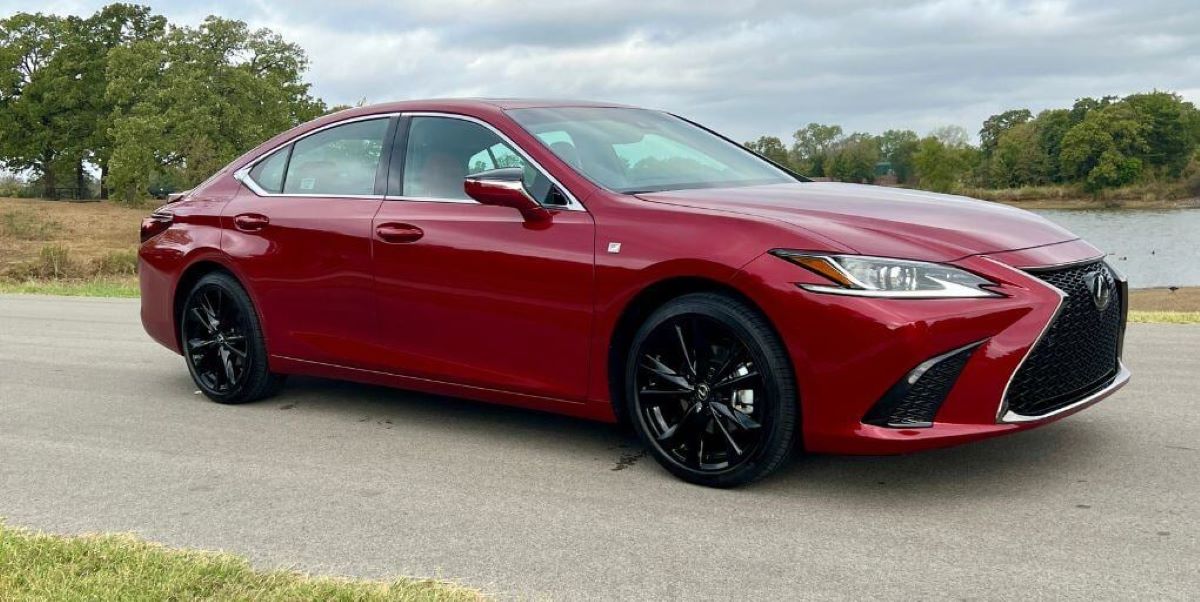
The radiator fan system operates on a variable speed controller that responds to multiple temperature sensors throughout the powertrain, ensuring cooling airflow precisely matches thermal demands.
The transmission cooling system in the ES 300h deserves special mention. The electronically controlled continuously variable transmission features a dedicated heat exchanger that maintains optimal fluid temperatures even during the constant engagement changes typical of stop-and-go conditions.
This prevents the transmission fluid degradation that often leads to premature failures in vehicles regularly subjected to traffic jams. Beyond these mechanical systems, the ES 300h employs sophisticated software algorithms that proactively manage thermal loads.
The hybrid system controller continuously monitors dozens of parameters and can seamlessly shift power distribution between the gasoline engine and electric motor to prevent any component from approaching thermal limits.
The system even learns from driving patterns, adapting its thermal management strategy to the specific conditions each vehicle regularly encounters.
This comprehensive approach to thermal engineering explains why Lexus ES 300h owners consistently report exceptional reliability in urban environments.
The vehicle’s ability to maintain optimal operating temperatures regardless of external conditions or driving patterns translates to remarkable longevity and consistently smooth operation even in the most challenging traffic scenarios.
5 Cars That Struggle with Overheating in Traffic
After mentioning the most reliable cars in traffic, here are the 5 cars that are bound to heat up travelling through heavy traffic.
1. Volkswagen GTI (MK5 and MK6 Generations)
The Volkswagen GTI, particularly the fifth and sixth generations produced between 2006 and 2013, has developed a notorious reputation for overheating in stop-and-go traffic conditions.
While celebrated for its engaging driving dynamics and practical hot hatch versatility, these GTI generations harbor fundamental cooling system inadequacies that become painfully apparent during urban congestion.
At the root of the problem lies an undersized radiator paired with a cooling fan system that struggles to move sufficient air volume at low speeds. Unlike highway driving, where natural airflow assists cooling, traffic situations leave these components solely responsible for heat dissipation.
The 2.0-liter turbocharged engine while excellent for spirited driving generates significant heat during the constant acceleration and deceleration cycles typical of congested conditions. This heat overwhelms the marginal cooling capacity, leading to steadily climbing temperature gauges.
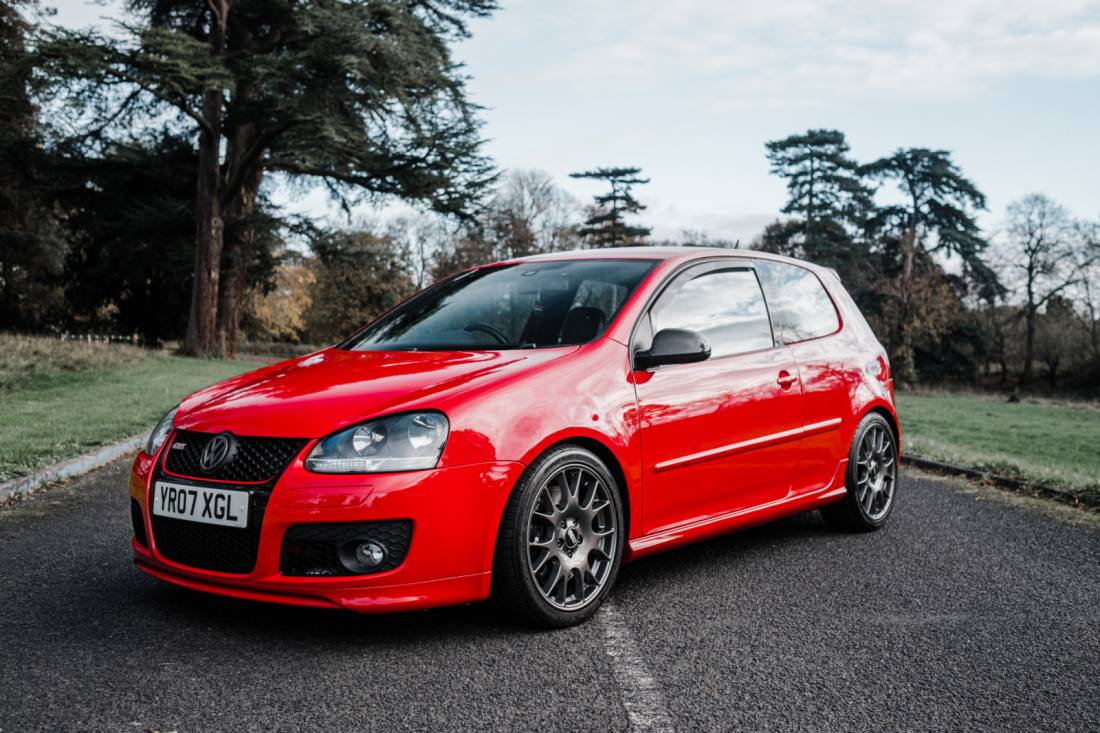
Compounding these issues is the GTI’s problematic thermostat housing, often constructed from plastic components that deteriorate over time. As these components age, tiny fractures develop that allow coolant seepage a problem that might go unnoticed until the vehicle encounters prolonged traffic.
The water pump impellers, also made from plastic in many units, are prone to degradation that reduces coolant circulation precisely when it’s most needed.
Volkswagen’s electronic cooling fan control module presents another failure point, with many owners reporting erratic fan operation during extended idling.
The fan may either fail to engage when needed or operate at insufficient speeds to provide adequate cooling. This electronic control issue often appears intermittently, making diagnosis challenging until complete failure occurs typically during the worst possible scenario of summer traffic.
GTI forums and owner groups contain countless accounts of rescue missions involving emergency coolant additions and roadside overheating episodes. While aftermarket solutions exist including all-aluminum radiator upgrades, revised thermostats, and metal impeller water pumps these represent additional costs and complications for owners.
Volkswagen made improvements in subsequent generations, but the MK5 and MK6 GTIs remain cautionary tales of performance-oriented vehicles with cooling systems inadequate for the realities of urban driving.
2. Jeep Wrangler (JK Platform, 2007-2018)
The Jeep Wrangler JK platform, produced between 2007 and 2018, embodies exceptional off-road capability but demonstrates significant thermal management shortcomings when confined to urban traffic congestion.
Despite its rugged image and go-anywhere attitude, the JK Wrangler’s cooling system reveals compromise when faced with low-speed stop-and-go conditions, particularly in warmer climates.
The fundamental cooling challenge stems from the Wrangler’s iconic box-like aerodynamics. While beneficial for off-road visibility and approach angles, this design creates significant airflow restrictions through the engine bay, especially at low speeds.
The radiator, while adequately sized for continuous highway driving, struggles to dissipate heat when natural airflow is limited during traffic crawls.
This becomes especially problematic in four-door Unlimited models equipped with the 3.6-liter Pentastar V6, which generates substantial heat even under moderate loads.
Compounding these issues is the Wrangler’s transmission cooling system, which proves marginal during extended periods of partial clutch engagement common in traffic.
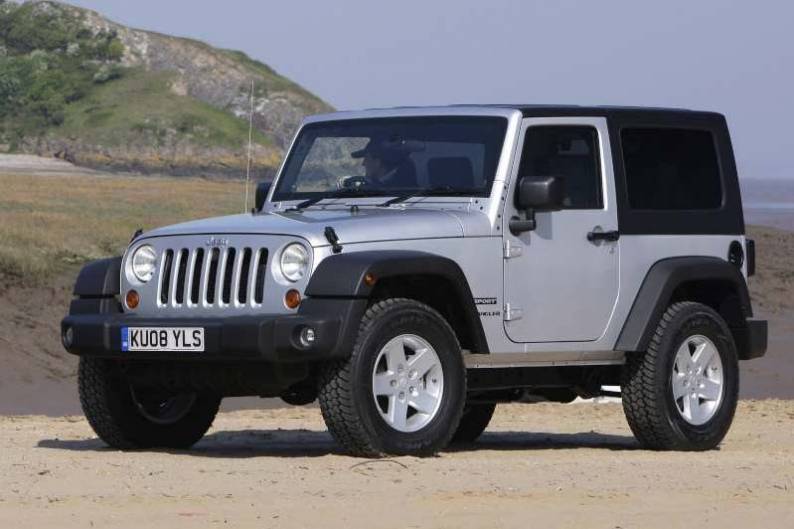
The automatic transmission fluid temperatures can climb rapidly during the constant torque converter cycling of bumper-to-bumper driving. While the transmission does have a temperature warning system, by the time it activates, significant stress has already been placed on transmission components.
The electric cooling fan system in the JK platform also demonstrates limitations during prolonged idle periods. The system was designed with adequate capacity for typical driving cycles but shows diminishing effectiveness during extended operation.
Many owners report temperature gauges climbing steadily toward the red zone after 20-30 minutes in non-moving traffic, particularly when the air conditioning system is operating simultaneously.
The JK Wrangler’s cooling system vulnerabilities have spawned an entire aftermarket industry of solutions, including oversized radiators, auxiliary transmission coolers, and high-output fan upgrades.
Jeep forums contain extensive discussions on “traffic survival modifications” considered essential by owners in hotter climates. While these aftermarket improvements can mitigate the issues, they represent additional costs and complications beyond what should be necessary in a modern vehicle.
The subsequent JL generation Wrangler introduced in 2018 addressed many of these cooling deficiencies, but the long-running JK platform serves as a reminder that off-road prowess doesn’t automatically translate to traffic jam resilience.
3. Ford Focus (Third Generation with PowerShift Transmission)
The third-generation Ford Focus equipped with the problematic PowerShift dual-clutch transmission represents one of the most notorious examples of a vehicle poorly suited for stop-and-go traffic conditions.
Produced between 2012 and 2018, these Focus models were initially marketed for their fuel efficiency and responsive driving characteristics, but quickly became recognized for their catastrophic transmission overheating issues in urban environments.
At the heart of the problem lies the PowerShift transmission’s fundamental design philosophy. Unlike conventional automatic transmissions with fluid torque converters, the PowerShift employs dry clutches similar to a manual transmission but operated by computer-controlled actuators.
While theoretically more efficient, this system lacks the inherent cooling properties of traditional transmission fluid. During the constant engagement-disengagement cycles of traffic, these clutches generate tremendous heat with insufficient means of dissipation.
Ford’s initial cooling provisions for the PowerShift were woefully inadequate for real-world traffic conditions. The transmission control module would often fail to properly manage clutch engagement during low-speed operation, causing excessive slippage and heat buildup.

As temperatures rose, the clutch material would begin to deteriorate, creating a downward spiral of worsening performance and increased thermal load. Many owners reported transmission warning lights illuminating after as little as 15-20 minutes in heavy traffic.
The situation would typically manifest as increasingly erratic shifting behavior as temperatures climbed, followed by violent shuddering, and eventually complete transmission lockup requiring roadside assistance.
Ford issued multiple software updates attempting to address the control issues, but these proved inadequate to overcome the fundamental thermal management deficiencies. The company eventually faced class-action lawsuits and extended warranty coverage related to these issues.
Most concerning was the transmission’s tendency to enter a protection mode during overheating episodes that severely limited vehicle functionality, sometimes stranding drivers in dangerous traffic situations.
While later production years saw modest improvements in clutch materials and control algorithms, the fundamental inability to handle prolonged stop-and-go conditions remained.
For urban commuters, this generation Focus with the PowerShift transmission represents a textbook example of how inadequate thermal engineering can transform an otherwise competent vehicle into a liability when facing everyday traffic conditions.
4. MINI Cooper S (R56 Generation, 2007-2013)
The R56 generation MINI Cooper S, produced between 2007 and 2013, epitomizes the conflict between compact performance engineering and thermal management requirements.
While celebrated for its engaging handling and distinctive styling, this MINI harbors significant cooling system inadequacies that become particularly evident during stop-and-go traffic conditions.
At the core of the R56’s thermal challenges lies its turbocharged 1.6-liter Prince engine, developed jointly with PSA Peugeot Citroën. This compact powerplant generates impressive output for its size but creates substantial heat that must be dissipated through a cooling system constrained by the MINI’s diminutive front end.
The turbocharger, positioned in an area with limited airflow, compounds these challenges by adding another significant heat source in close proximity to other critical components.
The R56 Cooper S employs an electric water pump that, while theoretically more efficient than mechanical alternatives, proves problematic in traffic situations.
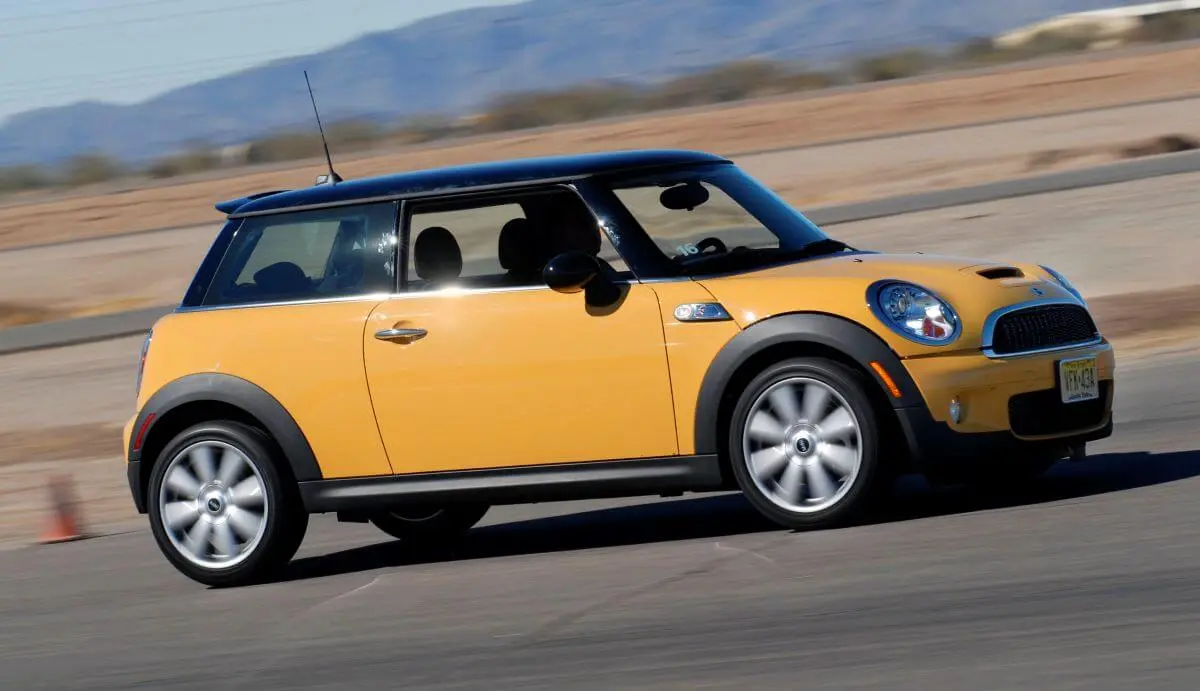
These pumps have a documented failure rate significantly higher than conventional designs, often failing without warning. When functioning, they still struggle to circulate sufficient coolant volume during extended idling periods.
Most concerning, their electronic control can reduce flow rates at idle precisely when maximum circulation is needed during traffic congestion. Compounding these issues is the R56’s cooling fan system, which struggles to move adequate air through the radiator during low-speed operation.
The thermostat and temperature management programming frequently allow the engine to run at raised temperatures before triggering maximum cooling intervention, a strategy that provides minimal thermal margin during extended traffic situations.
MINI forums contain countless accounts of R56 Cooper S owners experiencing temperature gauge spikes during summer traffic jams, often accompanied by coolant loss through the expansion tank as pressure exceeds design parameters.
While MINI implemented some cooling system revisions throughout production, including updated water pumps and thermostats, the fundamental thermal management limitations remained.
Aftermarket solutions became almost mandatory for owners in warmer climates, including upgraded radiators, high-output fans, and revised engine management software to prioritize cooling over performance during low-speed operation.
The subsequent F56 generation addressed many of these issues, but the R56 Cooper S stands as a cautionary example of performance optimization taking precedence over traffic-jam survivability.
5. Audi TT (First Generation, 1998-2006)
The first-generation Audi TT, while revolutionary in design and influential in the sports coupe segment, harbors significant cooling system deficiencies that become painfully apparent during stop-and-go traffic conditions.
Produced between 1998 and 2006, this iconic Audi combined distinctive styling with turbocharged performance, but its thermal management system proved inadequate for the challenges of urban congestion.
The TT’s cooling problems stem from multiple engineering compromises made in the service of its distinctive aesthetics. The rounded front fascia, while visually striking, restricts airflow to the radiator, particularly at the low speeds encountered in traffic.
The compact engine bay packaging necessitated by the TT’s curvaceous proportions creates heat concentration issues with limited pathways for thermal dissipation. These fundamental design decisions prioritized style over thermal efficiency, a compromise that becomes evident during extended idle periods.
Particularly problematic is the TT’s auxiliary electric cooling fan system, which struggles to move sufficient air volume through the radiator when natural airflow is limited.
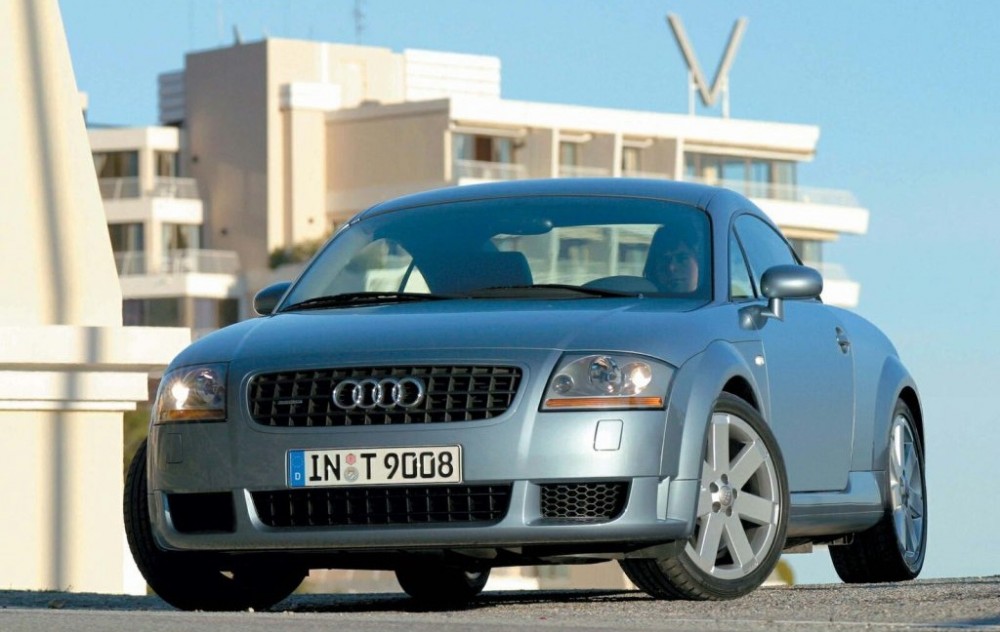
The fan control module often fails to engage maximum cooling soon enough during temperature spikes, allowing critical thresholds to be exceeded before intervention.
This reactive rather than proactive approach to temperature management provides minimal thermal buffer during the erratic demands of traffic conditions.
The 1.8-liter turbocharged engine, especially in higher output variants, generates substantial heat that overwhelms the marginally adequate cooling system during low-speed operation.
The turbocharger itself becomes a significant heat source, with limited provisions for cooling during the off-boost conditions typical of traffic crawls. Oil temperatures can climb dramatically during extended idle periods, potentially accelerating wear on critical engine components.
Audi TT forums contain extensive discussions about “traffic survival modifications” considered essential by commuters, including upgraded fans, larger radiators, and revised temperature control modules.
Many owners report installing auxiliary temperature gauges to provide earlier warning of impending thermal issues than the factory instrumentation allows.
While subsequent TT generations addressed many of these cooling deficiencies through fundamental redesigns, the first-generation model remains notorious for its beautiful but thermally compromised engineering a striking example of form taking precedence over functional thermal management in traffic conditions.
Also Read: 5 Vehicles That Survive Any Terrain and 5 That Don’t Belong Off-Pavement

